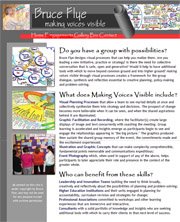What kind of network are you in? Are there power issues? Any hoarding of information? Are people anxious to leave? If mapped, would it look like a wheel and spokes? You’re probably in an Ambition Network.
Or do you see trust and excitement? Is there a generative or even magical atmosphere? Is emotion freely displayed? Is there an emergence of well-being? Would a network map show star patterns? If so, you’re in a Collaborative Network. Think of the high accomplishments in your life: was there a prominent social aspect, and waves of emotion?
How might we move forward in either of these? Ask a few questions. Are you inspired? Where do you feel joy? What are you conserving in your manner of being with others? Are you a mindful and compassionate leader?
And then, try something really revolutionary, something your OD and HR people will not like: stop using the word “change.” Ask instead “What do we need to conserve?”
I was left with a question: what does this tell us about what we should capture in our graphics with groups. There is a saying that content is king, and some of us work as if taking depositions. Is there another layer that - if not represented - we should be showing the way to?
 The conference closed with Betty Sue Flowers and Peter Senge on Connecting with Meaning to Fuel Our Highest Performance. Human systems start in thought, often in untested assumptions. “Grow or die” for example. These thoughts are evident in our stories, and it is on our stories that our lives depend. Those stories can change shape with changes in perspective; the hero story is different from the victim story which is in turn different from the learning story, even if the players are the same.
The conference closed with Betty Sue Flowers and Peter Senge on Connecting with Meaning to Fuel Our Highest Performance. Human systems start in thought, often in untested assumptions. “Grow or die” for example. These thoughts are evident in our stories, and it is on our stories that our lives depend. Those stories can change shape with changes in perspective; the hero story is different from the victim story which is in turn different from the learning story, even if the players are the same.We may now be caught between two stories: the one from the Industrial Age, and an emerging story of a universe that is alive, with an irreversible trend toward communality and increasing connectedness. This new story is ecological in form and substance; its actors are creators and its mode is expressive. It is a story becoming aware of itself.


3 comments:
Hi
I really enjoyed reading about the Pegasus conference. I wish I had been there. Are you a SOL member?
/Anders in a snowy Sweden
http://www.vesterberg.se
Thanks for posting!
I am a member - how about you?
Bruce
Hi, Bruce,
I enjoyed reading your reflections on Pegasus--and really like your drawings. The notion of a graphic recorder is new to me, and I've been sharing your website with people in our community.
Mary Pierce Brosmer
Post a Comment